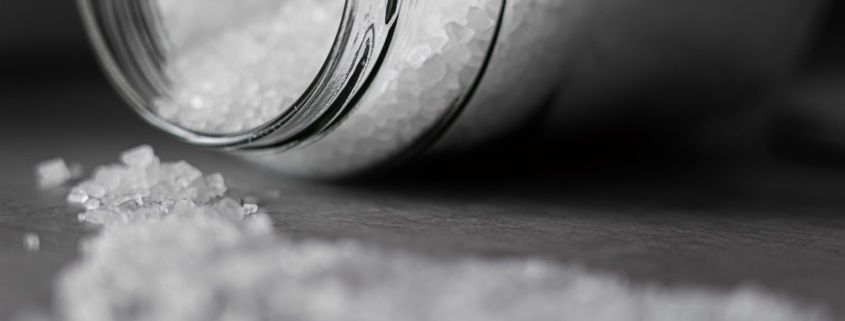Kicking the Salt Shaker to Celebrate World Salt Awareness Week
 Did you know that almost half of the people in the United States have hypertension? While hypertension is caused by a myriad of factors, including genetics, one factor that can contribute to high blood pressure is excess sodium intake. Sodium is found in many processed foods as well as table salt which people often add to food. Given the detrimental effects, excess sodium can have on your health, March 14th to 20th is World Salt Awareness Week.
Did you know that almost half of the people in the United States have hypertension? While hypertension is caused by a myriad of factors, including genetics, one factor that can contribute to high blood pressure is excess sodium intake. Sodium is found in many processed foods as well as table salt which people often add to food. Given the detrimental effects, excess sodium can have on your health, March 14th to 20th is World Salt Awareness Week.
Each year a new theme is selected to celebrate the week and this year is “Shake the Habit.” Salt is hidden in many foods, especially when eating out of the home. Salt is also commonly added to foods to “enhance the flavor.” However, there are hundreds of spices that you can add to your meals that won’t impact your health the same way that salt does.
According to the Dietary Guidelines for Americans, it is recommended that people consume less than 2,300 milligrams of sodium a day, which is about 1 teaspoon. Sodium in foods can be hard to avoid, however, there are some tips and tricks that you can try to reduce your intake.
Cooking without the Shaker
You may be the type of person who not only has a saltshaker out on the table, but one next to the stove to add to food as it cooks. The problem with this is, you are consuming a lot more sodium than you may even realize. There are ways in which you can enhance the flavor of a meal without having to add salt. Here are just a few:
Basil: You can grow it at home or buy it prepackaged from the grocery store in the produce aisle. Basil when fresh has a sweet yet savory taste which can also have a minty undertone. Not only is it delicious, but basil is packed with vitamins, minerals, as well as antioxidants. The antioxidants found in basil come in the form of beta carotene and anthocyanins, which can help protect your body’s cells from harmful free radicals.
Mint: There are so many dishes that incorporate mint. Mint has a strong flavor which causes a cool effect on the tongue. Given that mint already has an intense flavor, no salt is needed to enhance it. Mint has been shown to improve gastrointestinal issues such as abdominal pain and bloating.
Rosemary: If you are looking for a pungent lemony-pine taste, then this is the spice for you. A little rosemary can go a long way when it comes to flavor. One of the active ingredients in Rosemary is rosmarinic acid, which has anti-inflammatory effects. Rosmarinic acid has been shown to decrease allergy symptoms, improve nasal congestion, and improve brain functioning.
Sage: For heartier meals with a more earthy tone, you are going to want to use sage. It is rich in nutrients such as vitamin K and loaded with antioxidants. Vitamin K is needed by the body for blood clotting.
Paprika: Kick your meal up a few notches with paprika which can be mild to very hot. Paprika can be dried to have a smoky flavor. One of the nutrients found in paprika is vitamin E which can help with eye health.
Kicking the Salt Habit
Perhaps you have heart issues or just want to reduce your sodium intake, there are some simple tips that you can try. These are a few easy ways to reduce your sodium intake:
- Limit food intake prepared outside of the home. Foods prepared by restaurants often are high in sodium, especially soup. Try to keep your takeout to a minimum and go out to eat for special occasions.
- Cook at home. When meals are prepared at home you can control how much salt you are putting in them. Try to have most of your meals prepared within the home.
- Read labels. Of course, it is better to buy fresh foods, but this may not always be possible. So, be sure to read the nutrition labels when buying processed foods. Choose foods lower in sodium, look for a “low sodium” label on the front of the package.
- Put the shaker away. Remove the saltshaker from the table and the counter. As they say, out of sight, out of mind.
For most people, limiting sodium intake is good for your health. However, be sure to consult with a professional before making drastic changes to your diet.
Your Turn to Action: What is your favorite seasoning to use? Let me know in the comments below.


Leave a Reply
Want to join the discussion?Feel free to contribute!